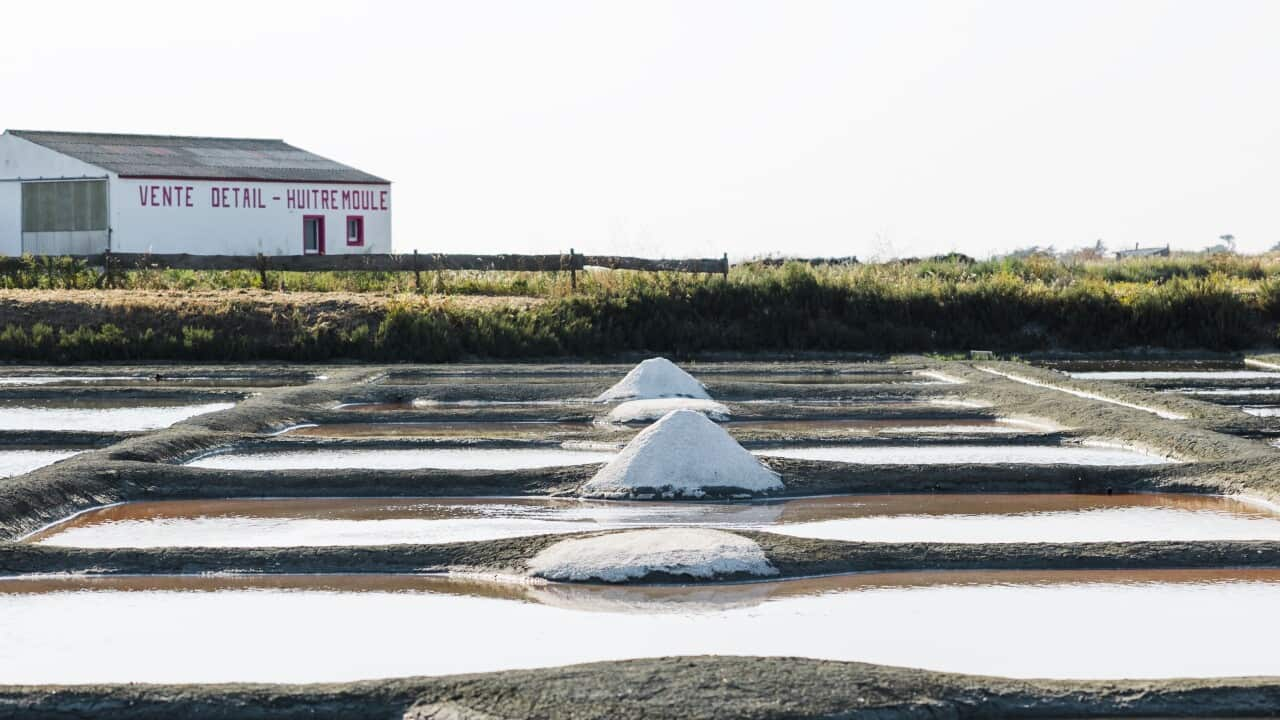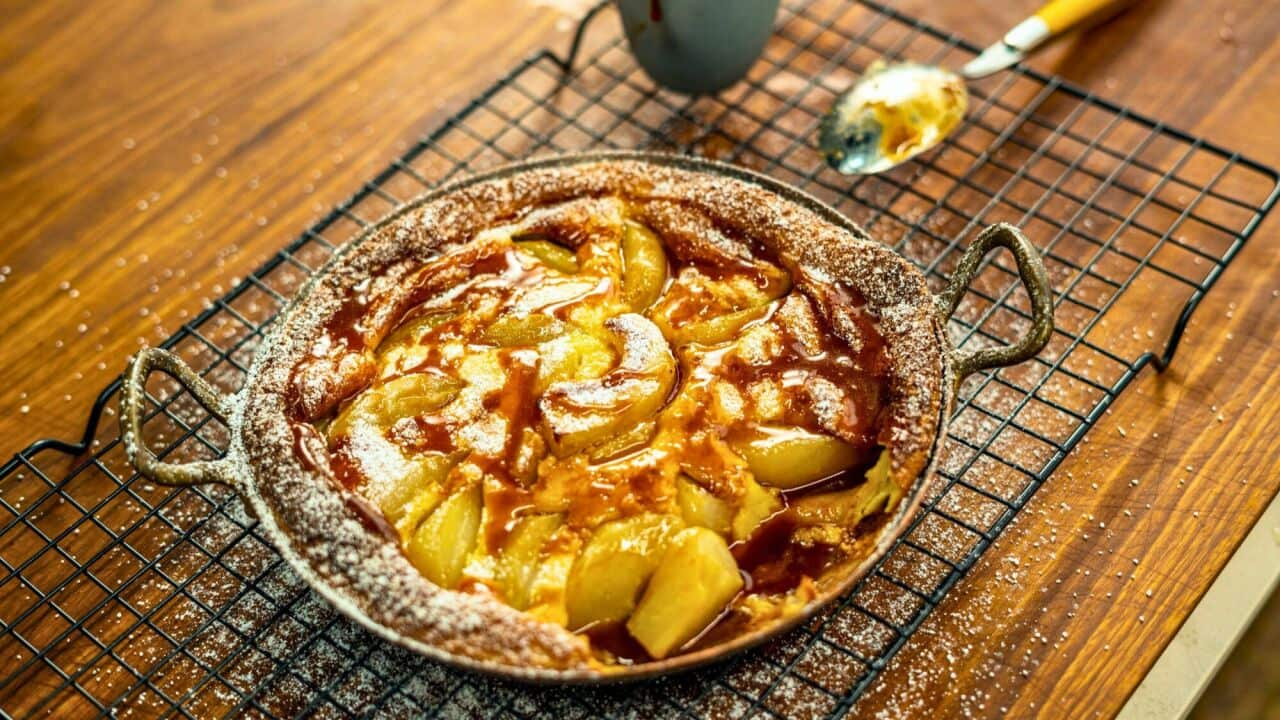--- From Normandy to the Spanish border, follow Guillaume Brahimi along the French Atlantic as he explores the incredible regions and flavours on offer at 7:30pm Thursdays on SBS and . ---
Stream free On Demand

Guillaume's French Atlantic
series • cooking
PG
series • cooking
PG
Windswept, wild, and just far enough from the mainland of France to make the distance a challenge is the island of Noirmoutier. In recent years, it has gained attention for its pretty landscape and fleur de sel, a delicate sea salt that's prized by chefs around the world.
Noirmoutier can trace its salt production back to the fifth century, when Benedictine monks began draining the island's natural wetlands to make salt beds, or salterns. Today, there are some 100 salt makers, called saunier, on the island, operating 3,000 œillets — harvesting pools — using traditional methods handed down over generations.
Fleur de sel, and salt in general, is a family business for Dylan Petitgas. He is a saunier whose paternal family has been harvesting salt as far back as they can tell. Though it skipped his grandparent's generation, his parents returned to the fold after saving enough to purchase their own salt marshes where they built their own salterns from clay, now called the Marais Salants 'La Bonne Pogne'.

Credit: Alexandre Lamoureux
I have my roots here, I grew up here. Whenever I go away from the sea for too long, I need to go back.
"Thanks to their hard work, my siblings and I, we grew up in the salt marshes," says Petitgas. "When I was younger, I worked in Paris, in Nantes, in the Alps too. But whenever I go too far away from the sea, I have to go back. I would never do anything else."
Noirmoutier salt is a labour of love for many saunier. It's hard work, Petitgas says, but it's a lifestyle — and a landscape — that people from all walks of life are attracted to. It's also an industry in which more young people are getting involved.
"What I love, and what I think so many people love about the job, is it's so free," Petitgas explains. "My parents, they were waiters. But I've had teachers, mechanics, policemen, everything, all kinds of people. Anyone can be a saunier."
The crème de la crème
Fleur de sel is one of the salts that Bonne Pogne produces. It's less salty and tastier than bigger grains, even from the same œillet. It only makes up about five per cent of the total annual harvest. In Noirmoutier, it must be harvested by hand from the top layer of water where it naturally forms a crust, like cream skimmed from the top of milk.
"As soon as it crystallises, it is harvested," says Petitgas. "That's because, if the grains get too big, they sink and it is no longer fleur de sel, just normal salt."

Passage du Gois. Credit: Alexandre Lamoureux
Salt of the earth
Petitgas' father taught him the trade, and other than using newer tools, he still harvests salt the same way his great grandfather once did. There are no machines to be seen, and production is small scale: water is moved from pool to pool by hand, swept along with a lousse à fleur, a broom-like tool with a long handle, water evaporating along the way until the salinity level increases from five percent to 30. Sauniers move wheelbarrows from œillet to œillet, collecting piles of sun-dried salt and adding them to the final harvest pile. They bag salt by hand, and proportion spices by eye and taste for pre-made mixes.
With such a quality product, it's not surprising that modern Noirmoutier cuisine often uses salt to bring out the natural flavours of local produce.
"The majority of Noirmoutrins were peasants," says Petitgas. "So their cuisine was simple and unpretentious by necessity, I think. Salt was for conservation, not flavouring. It was only once we developed refrigeration that salt became a product used to enhance food, rather than preserve it."

Anyone can be a saunier in Noirmoutier. Credit: Simon Bourcier / Office de Tourisme Ile de Noirmoutier

Fresh produce plays a key role in the food of Noirmoutier. Credit: Julien Gazeau
Or his favourite: "Simply burrata and tomato sprinkled with a little bit of my own fleur de sel. The older I get, the more I appreciate salt as a way to bring out natural flavours of good quality ingredients."











